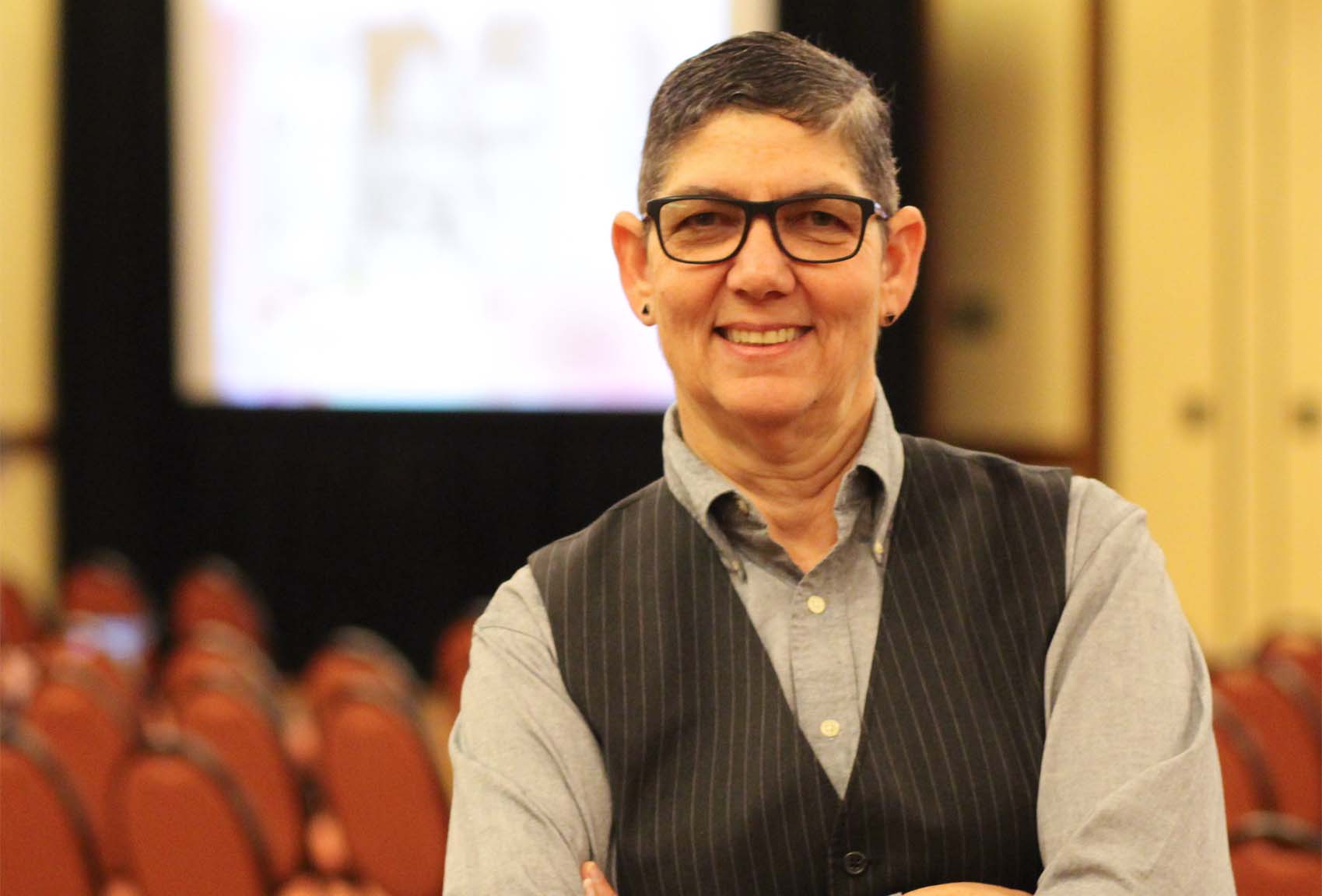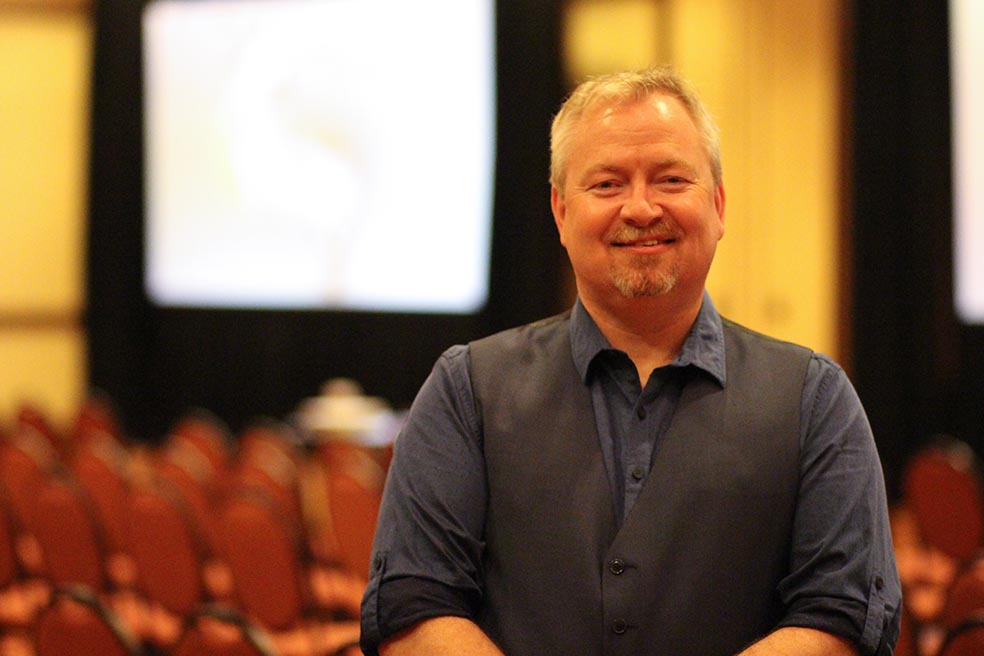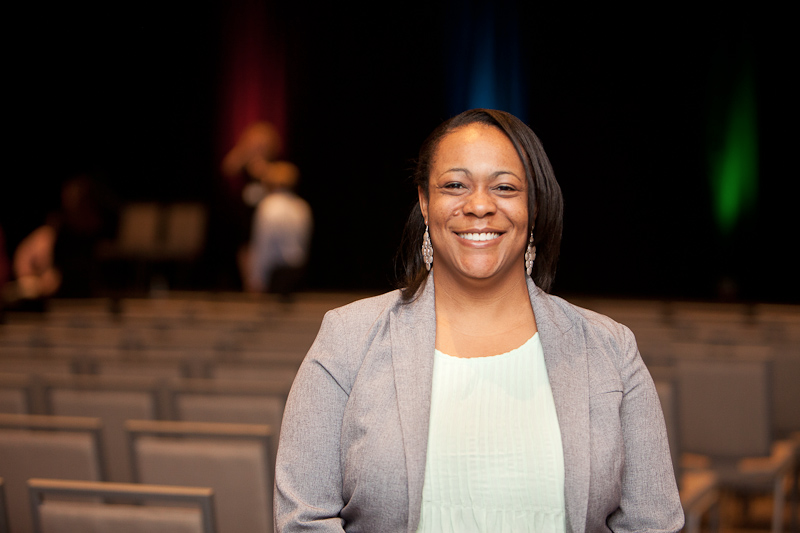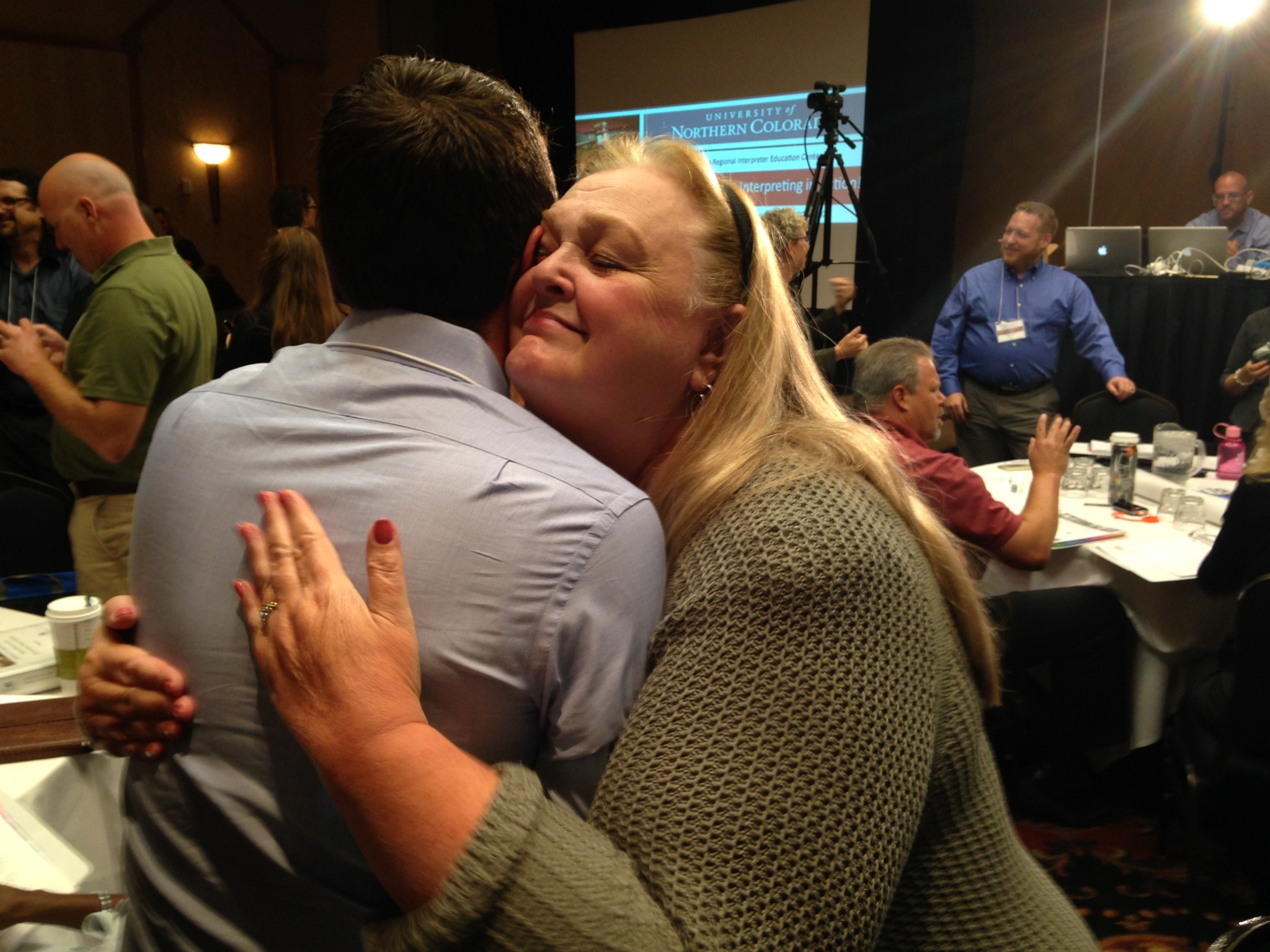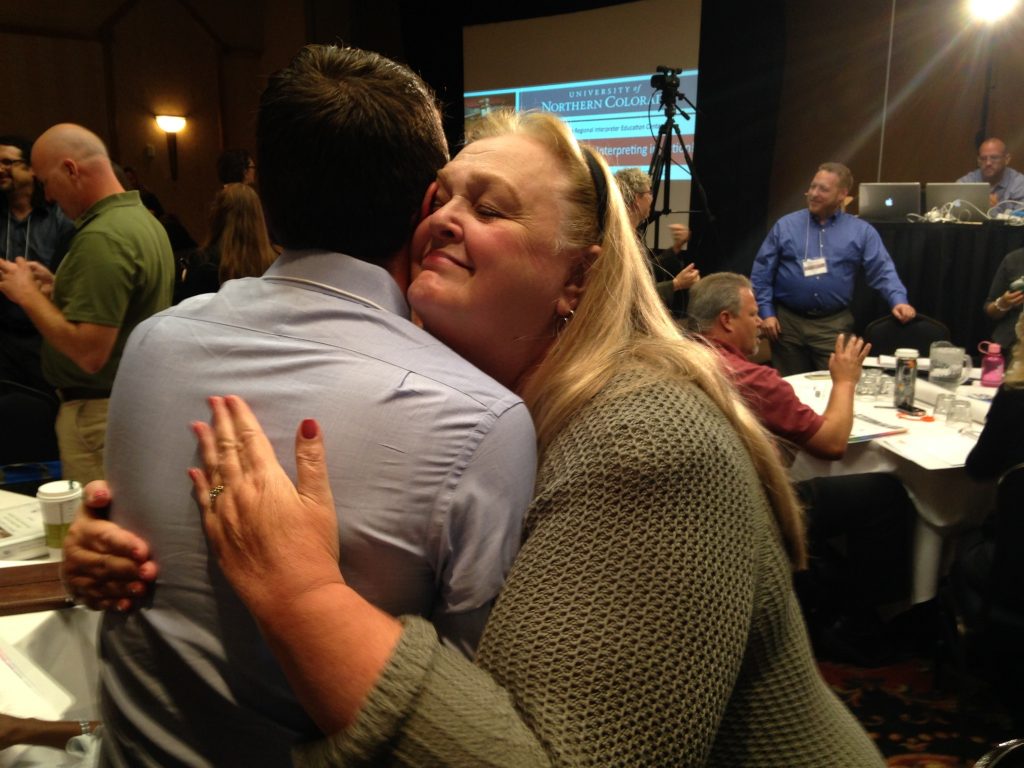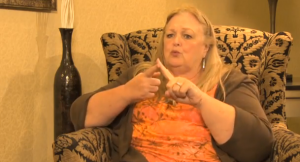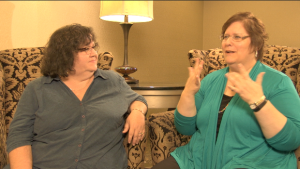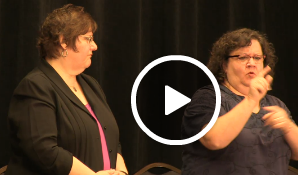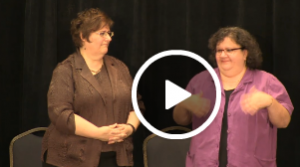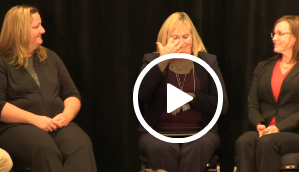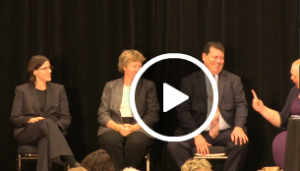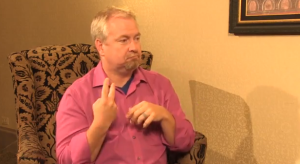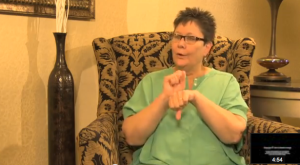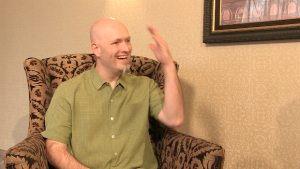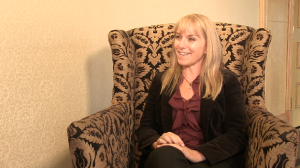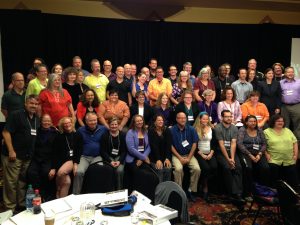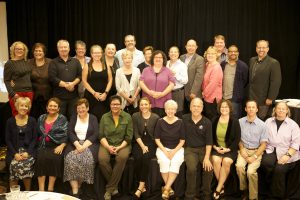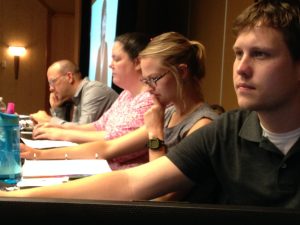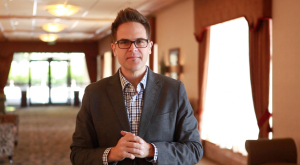
Potentially life-altering situations and settings call for the skills of a Deaf interpreter, however their provision is inconsistent. Kelby Brick suggests that a shift in paradigm and policy is needed to ensure the consistent presence of CDIs.
Crackers or crack cocaine? If a potential Deaf witness used a signed reference to crackers during a police interview, would you immediately understand the meaning? Fortunately, in this situation, the hearing interpreter (who was top-notch) knew enough to team up with a Deaf interpreter who immediately figured out that the witness was not talking about the food cracker but about crack cocaine. Because of the presence of the Deaf-Hearing interpreting team, effective communication occurred.
[Click to view post in ASL]
Unfortunately, thousands of Deaf people experience serious settings and situations without the services of an interpreter team made up of a Deaf interpreter and a hearing team interpreter. This exclusion of the Deaf interpreter results in unnecessary life-altering experiences for Deaf individuals. A new ethical and financial paradigm is needed to ensure the presence of Deaf interpreters in those settings and situations.
Excluding Deaf interpreters in these setting/situations is a violation of the CPC.
Why The Resistance?
It Requires Hearing Interpreter Involvement
Hearing interpreters worry that if they ask for a Deaf team interpreter, they will be perceived as incompetent[i] even though the very best interpreters recognize that even they need Deaf interpreters. Carla Mathers, a renowned practicing attorney and interpreter remarked recently in a StreetLeverage presentation, “My best interpretation, however, will never equal the value, skills and contributions of a Deaf interpreter.”[ii]
These hearing interpreters are also concerned about losing the assignment to a less competent or less ethical interpreter who could perhaps do greater damage. They may also be unaware of settings or situations that mandate the use of a CDI. As a result, they just plow ahead and hope for the best.
The National Consortium of Interpreter Education Center stated that “the initial determination is left to the [hearing] interpreter, it is of critical importance that legal interpreters undertake this analysis and to subordinate any feelings of inadequacy in the event that a deaf interpreter would be able to assist, improve or enhance the quality of the interpretation. The decision to recommend a deaf interpreter is an indication of professionalism, not a sign of incompetence.”[iii][iv]
RID Must Revise their Definition of a CDI
The realities highlighted above make it difficult to implement the NAD-RID Code of Professional Conduct (CPC), which makes it clear that hearing interpreters need to ensure the presence of a Certified Deaf Interpreter (CDI) in specific settings and situations. However, CPC Illustrative Behaviors 2.2, 2.3, 2.4, 2.6, 4.1 and 6.3 are all places where one could make a case that the exclusion of Deaf interpreters is a violation.
First and foremost, the current RID Standard Practice Paper “Use of a Certified Deaf Interpreter” must be updated. This version is antiquated and perpetuates the myth that a CDI is needed only in unusual situations where the “communication mode of a deaf consumer is so unique that it cannot be adequately accessed by interpreters who are hearing.” Historically, Deaf interpreters have been involved in all types of communication situations long before the establishment of RID or interpreter training programs, effectively navigating between languages and providing important cultural perspectives and experiences that make an interpretation more accurate.
Systemic Bias
Two of the common reasons for the ongoing systematic failure to include Deaf interpreters in those settings and situations are as follows:
1) The payer of the services will seek the lowest bidder, or
2) The hearing interpreter is burdened with decision of whether to bring in a Deaf interpreter and worried about the various possible negative consequences that could result from a request for a Deaf team interpreter.
We recognize that courts, police departments, hospitals and other entities often seek the lowest price structure for interpreters. Bidders of those contracts, whether by interpreting agencies or by free-lance sign language interpreters, are thus incentivized to exclude Deaf interpreters in their proposals in order to win those contracts. [v] As a result, the Deaf consumer frequently suffers and is impacted negatively.
How to Resolve the Problem
Hearing interpreters work in various life-altering situations on a daily basis without the presence of Deaf interpreters. Excluding Deaf interpreters in those settings or situations is a violation of the CPC. The question now is how can we make it easier for ethical interpreters to uphold the CPC in their business practices? A solution is desperately needed here.
We propose a new standard practice paper by the Registry of Interpreters that would require interpreting contracts to automatically establish the presence of Deaf interpreters in specific situations.
The revised standard practice paper should clearly state that it is unethical to place hearing interpreters without deaf interpreters in defined settings. The standard practice paper would also clearly define best practices which would automatically include Deaf interpreters from the onset for any contracts with hospitals, courts, and other legal settings.[vi] The standard practice paper would then tie the CPC into the hearing interpreter’s obligation to automatically require a Deaf interpreter team in those specific settings.
With this new standard practice paper in place, agencies bidding for contracts can confidently include the use of Deaf interpreters in their proposals and point out that competitor proposals without the inclusion of Deaf interpreters are unethical, illegitimate and represent a violation of RID standard practices and also violate the CPC.
This structure will relieve the hearing interpreter of the burden of assessing the linguistic need of the Deaf consumer, the burden of trying to suggest that a Deaf interpreter is necessary and avoid the awkwardness of trying to explain that the presence of a Deaf interpreter does not reflect on the interpreting skills of the hearing interpreter. With this structure built into the contracts, agencies can more confidently send Deaf interpreters without worrying about the additional expenses.
Pioneering Radical Change
The California court system’s approach to Deaf interpreters is one place to build on for models elsewhere. The Administrative Office of the Courts in California establishes the presumption that a Deaf interpreter is needed for much broader scenarios including dealing with juveniles or dealing with adults with mental health issues. The Courts also state that CDIs are necessary when dealing with a Deaf person who “relies on uniquely deaf experiences that are unfamiliar to the hearing interpreter.”[vii]
This last line recognizes that CDI is necessary in almost all settings and situations. Accordingly, the California Court states that a Deaf interpreter should be
“provided in all civil and criminal actions in which the service is needed for effective communication and in which the deaf or hard-of-hearing individual is a party or witness in a case. These include traffic or other infractions, small claims court proceedings, juvenile court proceedings, family court proceedings, hearings to determine mental competency, and court-ordered or court-provided alternative dispute resolution, including mediation and arbitration.”[viii]
The Deaf-Hearing Communication Centre (DHCC) in Southeast Pennsylvania spells out from the onset that a Deaf/hearing interpreting team is automatically used in “major life-altering situations such as legal and mental health assignments.”[ix] DHCC explains further that
“Police and medical emergencies can have life-altering consequences. Therefore, a Deaf/hearing team of interpreters is usually required to ensure accurate, effective communication. This team approach has proven to be the most effective way to handle police and medical emergencies especially when the communication skills of the Deaf person are unknown.”[x]
Instead of being an exception, DHCC’s model should be the rule across the country. The first step needed to make that happen is the revision of the standard practice paper issued by RID. In the meantime, we urge ethical hearing interpreters and interpreter agencies to take the initiative to comply with the CPC and start requiring the automatic presence of Deaf interpreters in “life-altering” situations.[xi] We also invite readers to participate in dialogue to modify the current interpreter model to mandate the presence of Deaf interpreters in order to ensure Deaf individuals have accurate and effective communications in any setting. We also encourage readers to share this article with local interpreting agencies and institutions (such as the court, hospitals and police) to spark conversations on how they can start routinely ensuring the presence of CDIs along with hearing interpreters in those life-altering settings.
The use of CDIs in specific settings and situations should be the standard and normal practice. Just like a general medical practitioner would bring in specialized doctors (a cardiologist, for example) for some common situations, a hearing interpreter should bring in a specialized (Deaf) interpreter in some common situations. The skilled Deaf interpreter has contextual and cultural competency that far exceeds hearing interpreters’ ability to fully provide cultural and linguistic access to the Deaf user in situations that are typically at high risk for life-altering experiences.
The National Consortium of Interpreter Education Centers (NCIEC) has published a document, Deaf Interpreters in Court: An Accommodation that is More than Reasonable, that provides various citations where “deaf interpreters have proven their worth.”[xii] The evidence in this document and other documents cited here regarding the need for Deaf interpreters in specific settings and situations is overwhelming.
NCIEC has already outlined best practices for interpretation in court and legal settings, stating that deaf interpreters should be present in all court and legal settings and situations involving a deaf party, especially if deaf minors are involved.[xiii] This should go without saying:
Deaf interpreters should automatically be called for legal or medical situations.
Who Can Help and What Can They Do?
Interpreter agencies and hearing sign language interpreters need to be insistent in requiring the presence of Deaf interpreters in specific settings and situations. Interpreters (and agencies) need to turn down contracts that would put Hearing interpreters in the role of enabling oppression of Deaf individuals through their failure to ensure effective communications. The signing community also needs to work with institutions such as medical providers, courts and police departments to ensure that they require the presence of Deaf interpreters every time a sign language interpreter is requested. We also need make it clear within the interpreter community that the presence of a hearing interpreter without a Deaf interpreter team is tantamount to exploitation of the Deaf individual for the pecuniary or personal gain of the hearing interpreter. To initiate this conversation with agencies and hiring parties, all interpreters, Deaf and Hearing, and consumers are encouraged to share this article with others.
Conclusion
The interpreting profession has grown exponentially since the enactment of various civil rights laws including the Americans with Disabilities Act and the Rehabilitation Act of 1974. We should not, however, confuse the growth of the interpreting profession with the assumption that Deaf people are receiving effective communications. As ethical interpreters, each of us has an obligation to “render the message faithfully by conveying the content and spirit of what is being communicated, using language most readily understood by consumers.”[xiv] In many situations and settings, doing so requires the presence of a Deaf interpreter team. We also should require interpreting agencies and hiring parties to ensure the presence of Deaf interpreters as well. We can all do more. It’s the right thing to do.
What steps will you take in your community to initiate this conversation?
Co-Author, Jimmy Beldon, CDI, M.A., has been a professional involved in the interpreting field on many levels. Jimmy is the co-owner of Keystone Interpreting Solution, a consulting and interpreter referral business. He currently teaches in the Interpreter Training Program at St. Catherine University in St Paul, Minnesota. A renowned interpreter in the court system, Jimmy is a former Vice-President of the National Registry of Interpreters (RID) and the current Vice-President of the National Conference of Interpreter Trainer (CIT).
References
[i] The resistance to bringing into a Deaf Interpreter has been well documented. For example, Tiffany J. Burns, CI/CT writes in “Who needs a Deaf Interpreter? I do” (Views, November 1999) that I have noticed paranoia among many hearing interpreters, that in asking for a Deaf interpreter, they will appear unqualified or incompetent. I cannot stress enough what a misconception that is.”
[ii] “Perception Conflicts: The Role of Sign Language Interpreters in Court,” Carla Mathers, Esq., CSC, SC:L. StreetLeverage – Live 2014 | Austin.
[iii] “Deaf Interpreters in Court: An accommodation that is more than reasonable,” prepared by Carla Mathers, Esq., CSC, SC:L. The National Consortium of InterpreterEducationCenter, March 2009.
[iv] It is relevant to quote Carla Mather here from her Street Leverage presentation: “A Deaf interpreter possesses the skills and innate understanding of the language and Deaf experience which allows them to use language that is most accessible to the Deaf party, to apply expansion of concepts appropriately in order to ensure the communication is clear and accurately conveys the intended meaning. By ensuring that Deaf interpreters are involved in courtroom interpreting, we reduce the oppressive nature of the environment and we ensure that the support and advocacy needed are available to the Deaf parties involved. In addition to the linguistic expertise a Deaf interpreter brings to the courtroom, they are also often able to navigate the strict conventions and rules of the court. The Deaf interpreter may be able to provide perspectives and explanations regarding the seemingly oppressive court system that will allow the Deaf party to understand the system and its rules more clearly. At the very least, a Deaf interpreter may make navigating the systemic conflicts more palatable.”
[v] Octavian Robinson discusses, for example, that courts sells “contracts to the lowest bidder and sacrificing quality and more important, justice. The lowest bidding agency does not assure certified or competent interpreters. This creates a situation where a deaf person’s legal right, regardless of guilt, to a fair trial is compromised.” Robinson also explains that the penny pinching results in the exclusion of CDIs and thus causes Deaf people to lose out in the justice system. See http://blog.deafpolitics.org/2011/06/failure-to-act-for-change.html
[vi] In those rare cases where it is found that a Deaf interpreter is not needed, the Deaf interpreter can then be excused.
[vii] “Recommended Guidelines for the Use of Deaf Intermediary Interpreters,” Judicial Council of California/Administrative Office of the Courts. 2010.
[x] www.DHCC.org. DHCC explains, “four interpreters (two hearing and two Deaf) are on-call every evening, weekend and holiday. This way, we are prepared for multiple emergencies. A Deaf/hearing team – one interpreter who is Deaf and one interpreter who is hearing – ensures that we are prepared for any level of communication.”
[xi] While a lot of the citations here focus on legal settings, DHCC is correct here in saying that CDIs are necessary in other life-altering situations. This would include, among others, health settings and any settings involving juveniles.
[xii] “Deaf Interpreters in Court: An accommodation that is more than reasonable,” prepared by Carla Mathers, Esq., CSC, SC:L. The National Consortium of InterpreterEducationCenter, March 2009.
[xiii] “Best Practices American Sign Language and English Interpretation within Court and Legal Settings,” by Kellie Stewart, Anna Witter-Merithew and Margaret Cobb, Legal Interpreting Workgroup Members. The National Consortium of InterpreterEducationCenter, March 2009.
[xiv] NAD-RID Code of Professional Conduct.

